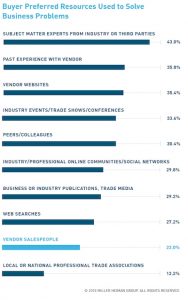It’s a new year—and for small business owners, that means new goals to achieve: More leads, more sales, more return customers, whatever your metrics for success happen to be. If you’re like many small business owners, however, you don’t have the budget (or the time) to devote to marketing to help you achieve your goals.
Fortunately, there are lots of marketing ideas and tactics you can implement that get great results and don’t break the bank. Ready to jumpstart your small business marketing? Check out these # budget-friendly marketing tips every small business owner should try.
Implement a Content Marketing Plan
If you have a website, you can get started on one of the most valuable trends in digital marketing. Content marketing is a way for you to connect with your customers and potential customers in a personal, non-salesy way that helps you establish relationships and grow your brand awareness.
Think you’re not a writer or can’t possibly have anything interesting to say? There are lots of ways to make content marketing work for you. Check out these examples anyone can adapt and use:
Make a how-to video tutorial. A restaurant owner, for example, can demonstrate how to properly open, aerate, and decant a bottle of wine. A fashion e-commerce business might show several ways to tie a scarf. Think about what you know that your customers might want to learn—and then show them how to do it.
Create or curate a best-of list. Numbered lists are extremely popular content and they’re easy to put together. Again, approach this with your customer’s needs and interests in mind. A gym might publish 8 Best Fitness Apps for iPhone, for example, while a farmer’s market might curate 6 Best Recipes for All Your Zucchini. Be creative!
Write a product review. Even if “creative” writing isn’t your thing, you can easily craft a product review. Use bulleted lists of pros and cons or a quick spreadsheet comparing two or three different products.
Show the hidden side of your business. Interview one of your employees and explain his role in the business. Walk customers through the manufacturing process for one of your products. Do you sponsor a local charity or sports team? Share pictures of the events you participate in.
Ask for guest posts. You probably have lots of untapped potential in your employees and co-workers; give them an opportunity to share their expertise and information, whether it’s an opinion piece, a recipe, some technical insight—anything that might interest your customers.
Depending on your business and customer base, aim to publish fresh content at least once or twice a week. Content marketing can help you boost your brand awareness, develop your reputation as a trusted expert in your field, bring customers in the door, and keep your website fresh and interesting.
Embrace Email Marketing
If you aren’t building your subscriber list and regularly emailing your customers, you’re missing out on a very cost-effective marketing tool. Here’s why:
 72% of consumers prefer to be contacted by email.
72% of consumers prefer to be contacted by email.
 91% of consumers like to receive promotional emails from companies they do business with.
91% of consumers like to receive promotional emails from companies they do business with.
 73% of brands say email is one of their core marketing channels.
73% of brands say email is one of their core marketing channels.
 25% consider it the best channel in terms of ROI.
25% consider it the best channel in terms of ROI.
Encourage customers to sign up for your email list, both in the store and on your website, and give them an incentive to do so—a discount on a future purchase or a free sample, for example.
Email marketing software is surprisingly affordable; some vendors even offer free plans for small businesses that have all the features you need to get started. How often you want to email your subscribers is a function of both your business niche and the amount of effort you can devote to creating useful content. If the idea of putting together an email newsletter leaves you cold, find a freelancer who will do it for a reasonable rate.
One note of caution: Don’t be tempted to rent or purchase an email list. This is almost always a bad idea for small businesses. Use your website and other channels to organically grow your mailing list, and use your emails to build relationships with your customers by offering them useful tools, content, and offers.
Build a Mobile App

Today’s consumer is a mobile consumer; more content is consumed on mobile devices than on desktops, and mobile search topped desktop search for the first time in 2015. People use their smartphones at every phase of the purchasing process, from researching products to comparing vendors and prices. In fact, mobile commerce accounted for 30 percent of all e-commerce and is expected to grow three times faster than e-commerce in 2016.
Even if you’re already reaching your mobile customers with your mobile website, a mobile app makes sense for many small businesses. Studies show that 85 percent of smartphone users would rather navigate through an app than through a mobile website, and the vast majority of mobile content is consumed through a mobile app.
Services like BuildFire make it easy and economical to build and host a mobile app that gives you on-demand access to push content and information to your customers. Why is this important?
 74% of consumers use their smartphone to help them shop.
74% of consumers use their smartphone to help them shop.
 Mobile offers are redeemed 10 times more frequently than print coupons.
Mobile offers are redeemed 10 times more frequently than print coupons.
 Over 50% of consumers say they’d be more likely to shop at a nearby store if they received an offer on their phone.
Over 50% of consumers say they’d be more likely to shop at a nearby store if they received an offer on their phone.
 42% of all mobile sales originated through a mobile app.
42% of all mobile sales originated through a mobile app.
Your mobile app will give you a leg up on other useful small business mobile marketing tactics, such as loyalty rewards and social media marketing.
Offer Loyalty Rewards
Every business owner knows that it costs more to acquire a new customer than it does to keep an existing one. Not only that, returning customers tend to spend about 67 percent more than first-time shoppers. It only makes sense to do everything you can to encourage sticky customers with a loyalty program, which is why about 65 percent of marketers use them.
For most small businesses, it’s best to keep things simple; a points system or tiered rewards program works well and is easy to manage with a mobile app or loyalty card. For frequent, smaller value purchases, a point system based on dollars spent or quantity of items bought is easy to implement. For larger, less frequent purchases (think hospitality or insurance, for example), a tiered program keeps customers engaged.
No matter how you structure your loyalty program, make it easy for your customers to understand how it works, and to track their progress toward their next reward. If your reward program formula is something like, “Earn one point for every $ 15 spent, 10 points is good for a coupon for 10% off a single item purchased on the 2nd Friday of every month,” you’re not rewarding your customers, you’re antagonizing them.
Start a Customer Referral Program
Encourage your loyal customers to spread the word about your product or service with a referral incentive program. Depending on your business, your referral reward can be a free product, a cash bonus, a service discount, or any combination. You can also combine it with your loyalty program by depositing a set number of points in a customer’s account for every referral they make.
The trick is finding a balance between offering a valuable enough incentive to encourage referrals without being so generous your program costs you money. And don’t forget to promote your loyalty and referral programs across all your marketing channels, as well as in the store.
Learn to Use Social Media Effectively

Image via Flickr by mkhmarketing
Over 80 percent of small businesses use social media in their marketing efforts, probably because:
 Over 70% of all adults use at least one social networking site.
Over 70% of all adults use at least one social networking site.
 3 in 5 SMBs say they have gotten new customers through social media.
3 in 5 SMBs say they have gotten new customers through social media.
 57% of your sales funnel is in social media.
57% of your sales funnel is in social media.
Most SMBs have a Facebook presence, and many are dabbling in paid Facebook ads. While paid ad ROI is elusive on this platform for many small business owners, organic social media activities are delivering measurable results. Here are some tips for smart social media marketing:
- Use your buyer persona to help you discover where your buyers spend their time on social media. Target your efforts on the platforms that align with their activities and interests. Make sure your posts fit best practices for the sites you use.
- Use an online automation tool to manage your social media postings; many offer free options for individual users or SMBs.
- Start user-generated content campaigns to keep followers engaged. They’re also an excellent source of fresh (and free!) content for your social media accounts.
- Know what you want to accomplish with your social media efforts (more web traffic, more landing page conversions) and establish measurable goals.
- Don’t be afraid to look at niche networks like Reddit, where you can engage with a very specific target audience. StumbleUpon is another up-and-coming social network that works well for certain businesses.
Run Some Online Contests
Few words attract online interest as well as “win,” “free,” “special offer,” and “giveaway,” and running an online contest is a great way to use those words to grow your customer base and acquire valuable demographic data about your audience. They can also be a convenient pipeline for user-generated content (think of Starbucks Red Cup Contest on Instagram).
You can make entering your contest as simple as liking or retweeting a post, following you on social media, or signing up for your mailing list—or you can ask your audience to enter their photos or Vines. Rafflecopter is a popular tool for managing every type of online giveaway, whether on your own website or any major social media platform. It’s also very affordable for SMBs, with no contracts or long-term commitments.
Get Serious About Your Online Reputation
Do you know what people are saying about your business on customer review sites like Yelp! or Angie’s List, or Google Review? If you don’t, you probably should: About 90 percent of consumers say their buying decisions are influenced by positive online reviews. Not only that, anecdotal evidence suggests positive ratings even help your search rankings—though Google hasn’t confirmed it.
You can (and should) take proactive steps to build your online reputation. Here are some tips to get started:
 Research the review sites that are best suited and/or have the most influence in your industry. Create or update your profile on the sites you identify, as well as any sites that turn up with reviews about your business/brand.
Research the review sites that are best suited and/or have the most influence in your industry. Create or update your profile on the sites you identify, as well as any sites that turn up with reviews about your business/brand.
 Create a page on your website with links to the review sites you want to highlight. Promote that URL in your other online marketing; include it in your email signature, for example, and on your social media profiles.
Create a page on your website with links to the review sites you want to highlight. Promote that URL in your other online marketing; include it in your email signature, for example, and on your social media profiles.
 Ask your customers to leave feedback and reviews, and make it easy for them to do so. Do you send a thank-you email to customers after a sale? Include a link to your review site and ask them to write a review. Direct customers to your review site on in-store receipts or printed flyers and incentivize them where possible: Enter customers into a monthly gift drawing if they leave feedback or write a review.
Ask your customers to leave feedback and reviews, and make it easy for them to do so. Do you send a thank-you email to customers after a sale? Include a link to your review site and ask them to write a review. Direct customers to your review site on in-store receipts or printed flyers and incentivize them where possible: Enter customers into a monthly gift drawing if they leave feedback or write a review.
 Monitor your review sites and respond promptly to any negative comments. Practice good customer service—and don’t forget to thank reviewers who leave outstanding feedback or remarks.
Monitor your review sites and respond promptly to any negative comments. Practice good customer service—and don’t forget to thank reviewers who leave outstanding feedback or remarks.
 If you’re a local business, focus on getting feedback on Google Maps (Google+ Local). Consider an email campaign to your customers with a gmail address asking for Google reviews.
If you’re a local business, focus on getting feedback on Google Maps (Google+ Local). Consider an email campaign to your customers with a gmail address asking for Google reviews.
Marketing your business on a small business budget doesn’t mean skimping on the high-impact tactics larger businesses use; it just means taking a smart and targeted approach to the activities that deliver results. Social media, content marketing, mobile—all are easily scaled to small business needs and capabilities.
Have any great marketing ideas that work on a budget? Share them in the comments below!
Business & Finance Articles on Business 2 Community(86)








